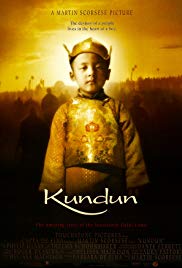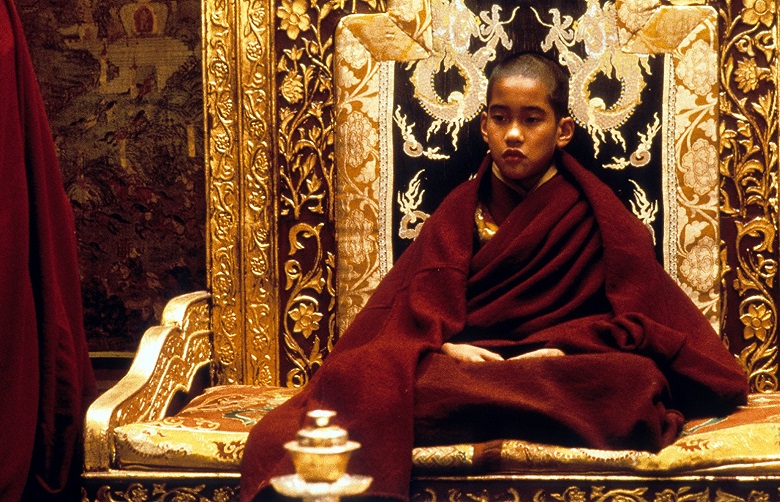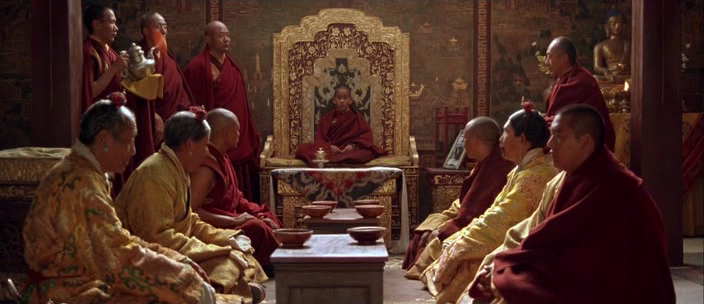For a brief description of Buddhist theology see Learning Guide to Little Buddha.
Tibet is a huge country, about the size of Western Europe or three times the size of California. It consists of a high plateau surrounded by some of the highest mountain ranges in the world. Tibet is rich in mineral resources. The climate is dry with temperatures ranging from very cold in the mountains to mild in the valleys. The dry climate discourages epidemics and permits the storage of grain for 50 to 60 years. The Tibetan people, between 2,000,000 and 3,000,000 in number, come from one ethnic group. They share the same language, customs, and religion. Before the 1950 Chinese invasion, Tibet was ruled by a theocracy and sought isolation from the world. Its economic development was minimal. The vast majority of its people were nomads or subsistence farmers.
The most recent Chinese invasion of Tibet occurred in 1950. China has attempted to pull Tibet into the modern world, bringing modern medical care, modern economic development, a network of roads and bridges, modern education and modern Chinese political indoctrination (formerly Communist but we don’t really know what to call it now). The Chinese are also attempting to destroy the religious culture of the Tibetans and undermine the power of the religious hierarchy. Tibet is flooded with many temporary Chinese immigrants. The Tibetans resent Chinese influence. There was an open rebellion in 1959, followed by severe Chinese repression, including forced collectivization of farms. There are occasional magazine and newspaper articles about the plight of the Tibetan people. See, e.g., Los Angeles Times, Tuesday August 3, 1999, Page 1.
After years of trying to work within the restraints imposed by the Chinese government, the Dalai Lama fled Tibet in 1959. He established a Government in Exile at Dharamsala, India, and he has fought the Chinese occupation of Tibet through nonviolent means. In 1998 he was awarded the Nobel Prize for Peace. The citation reads:
The Committee wants to emphasize the fact that the Dalai Lama in his struggle for the liberation of Tibet consistently has opposed the use of violence. He has instead advocated peaceful solutions based upon tolerance and mutual respect in order to preserve the historical and cultural heritage of his people.
The Dalai Lama has developed his philosophy of peace from a great reverence for all things living and upon the concept of universal responsibility embracing all mankind as well as nature.
The Dalai Lama continues his nonviolent resistance to Chinese rule. The situation continues to evolve. In early 2000, the young Karmapa Lama, who the Chinese had been grooming as a counterweight to the Dalai Lama’s authority, fled from Tibet. He has now joined the Dalai Lama in exile in India.
During his exile, the Dalai Lama has grown from the leader of a small and superstitious sect of Buddhism to a broad-minded and recognized leader of one of the major religions of the world. He has stated that his reincarnation will not occur in Tibet as long as it is controlled by China.




